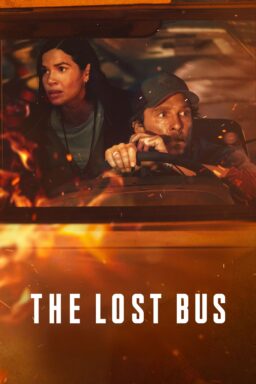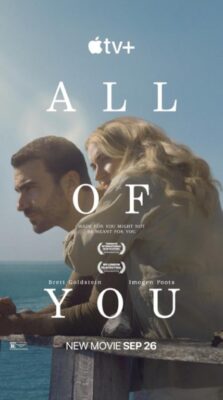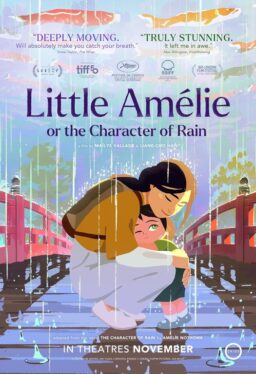Damian Marcano’s vibrant and kaleidoscopic “Chee$e” is the kind of directorial effort you always want to find at a festival—its paint-splattering filmmaking shows a new talent working on all cylinders, making clear their own voice. Marcano comes into SXSW 2022 with a unique background, in that he also has episodes of HBO’s “Winning Time: The Rise of the Lakers Dynasty” also premiering around the same time. It becomes clear watching “Chee$e” why director Adam McKay picked Marcano for directorial duties, and also that the show has a good deal of Marcano’s style in there, mixed with McKay’s own.
“Chee$e” takes after coming-of-crime stories like Martin Scorsese’s “Mean Streets” and Hype Williams’ “Belly,” showing how a young man can run into the abyss of criminal activity. Akil Williams plays Skimma, a cheesemaker in Trinidad who helps crack a scheme to smuggle weed throughout his village, by baking it into the cheese. The cops won’t detect it, even though they’ll notice the smell of a stinky van, and for some scientific reason it adds even more potency to the product.
Skimma is motivated to make this money in part when he finds out that his girlfriend Rebecca (Yidah Leonard) is pregnant, to the disgust of her fellow churchgoers. “Chee$e” also focuses on how she deals with the pressure of her faith community, later trying to get a curse put on Skimma, during the script’s tumultuous course of close calls with the police, bad luck, and eventually, do-or-die drug deals.
Marcano seemingly throws every style shot into the mix when telling a story that already has colorful characters. It becomes clear, and exciting, how alive many sequences are just from their editorial rhythms, along with the wall-to-wall music and the color. This is what filmmaking can be—it can be intoxicating, disorienting, toe-tapping, transporting. The only downfall about it really is that such momentum makes you all the more aware when the blocking is lacking, when it’s just two characters standing and talking at each other.
“Chee$e” leads with style, but it’s not only about experimenting, though there’s plenty of that. Williams’ lead performance helps ground the movie, and making Skimma’s hopes and fears resonate just like Marcano’s presentation of them. The sudden, confident ending practically took the wind out of me, and left me hungry for whatever project, TV or film, puts Marcano in a director’s chair next.

Making its world premiere in the festival’s Midnighters section, “Hypochondriac” is the kind of horror movie that has a few curious ideas but not enough to fill a feature. Written and directed by Addison Heimann, it begins with a title card saying “based on a real breakdown,” which is a funny and curious note to start on. But from here it becomes a flat character study of one man, Zach Villa’s Will, dealing with trauma from his mentally ill mother (Marlene Forte), and the memory of her trying to choke him to death as a child. She now appears to him in different, overwrought hallucination sequences, or as the snarling voice on the other end of a voicemail. In his dire state, he’s also afflicted by images of a monster, a heavy-handed metaphor that needs no explaining.
These visions start to have an impact on his work as a potter, and also on his relationship with his boyfriend Luke (Devon Graye), the latter helping make the script’s most compelling part. Graye and Villa share strong chemistry as a couple that’s in danger of being torn apart by the past, but the plotting is more geared on squeezing out tears and screams from Villa alone, often ending sequences with a cut to black or some cheesy vision of him cutting himself. “Hypochrondriac” finds little poetry in its obvious representations of grief and trauma, and its visuals tend to only be striking when Heimann overlaps visuals, experimenting with them in post. The story’s minimalism proves to be self-detrimental, and baffling—whatever was real about the aforementioned breakdown feels lost in the script’s horror short-hand.

Also premiering in the festival’s Midnighters section, “Bitch Ass” starts off with promise by getting Tony Todd in the mix. With his trademark growl and sharp smile, he introduces this movie from director Bill Posley in the context of previous horror movies about the Black experience—“Candyman,” “Bones,” “Tales from the Hood,” etc. Name-dropping these films before your own story is a bold move, especially when the camera then pans over to a TV to “present” to us what is the cliche and more than underwhelming experience that is “Bitch Ass.”
Using some inspiration from “Don’t Breathe,” “Bitch Ass” follows four young adults as they raid the house of an old woman and her grandson, as part of a gang initiation. What they don’t know is that the grandson is actually the “first masked Black serial killer,” to quote Todd’s introduction from earlier, and Bitch Ass (Tunde Laleye) starts to pick them off one by one. As if to confirm that the movie is more about grabbing familiar pieces, Bitch Ass then makes his prey compete in deadly, limb-ripping games that blatantly look like Connect Four, Battleship, Operation, etc. There’s just not enough imagination or tact to make this all unsettling or fun, even though a serial killer named “Bitch Ass” is a good hook.
“Bitch Ass” also takes after the more modern horror trend on bringing back the acts of earlier generations, this time by throwing in adults from Bitch Ass’ history as a scared young boy, to grapple with the bullying that made him into this monster. Though it also makes for corny flashbacks, the premise can make for a glimmer of an idea about how people do and do not change, especially when it comes to the love and hate from others. Sheaun McKinney and Me’lisa Sellers, giving strong performances as the sly gang leader and one of the initiates’ mother, respectively, show what kind of emotional stakes this story could have had.
But the most nightmarish element in “Bitch Ass” has nothing to do with its horror aspirations, and it was also seen throughout “Hypochondriac”—the egregious reliance on wide angle lenses. Both SXSW films use the lens as a means to capture something like four actors standing side by side in the same shot, without having to worry about too much coverage, even though it makes anything on either side of the frame thin out. In both films, or in any film that uses the lens this way, really, the lens takes away from what’s happening in the scene, killing the moment. It becomes difficult to take any such movie seriously when it constantly looks so misguided.












